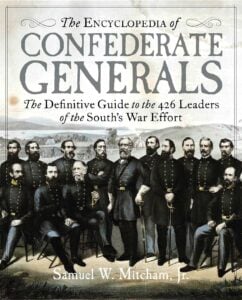
Dollars for Life: The Anti-Abortion Movement and the Fall of the Republican Establishment, by Mary Ziegler (Yale University Press; 344 pp., $35.00). Mary Ziegler, a careful and engaging scholar, now the Martin Luther King Jr. professor of law at the University of California, Davis, chronicles how the anti-abortion movement destroyed the Republican establishment by challenging campaign finance and spending limits on soft money, thereby empowering individuals and nonprofits to overwhelm the political parties in raising and spending money. The results, in her view, are marginal Republican candidates, like Donald Trump, who governed from weakness because he lacked majority support.
The GOP has always been of two minds about the right-to-life movement. After all, the Catholics and blue-collar evangelicals were formerly Democrats, and many in the movement saw political activity as irrelevant to saving the unborn, preferring to change hearts through public education. GOP-leaning business groups found right-to-lifers déclassé. And it has been no secret that the Republican Party courted anti-abortion voters while praying that the U.S. Supreme Court would deny their appeals, much as the GOP denounced Obamacare while praying that the court would let it stand. And GOP presidents have regularly disappointed the anti-abortion movement with pro-abortion judges.
So right-to-life advocates decided to help the cause and make themselves indispensable to the GOP by challenging campaign finance laws. A year after Roe v. Wade, decided in 1973, Congress amended the Federal Election Campaign Act as part of post-Watergate reforms. The legislation favored political parties over individuals in political fundraising, but beginning in 1976, the Supreme Court began striking down limits on independent fundraising and spending.
In 2010, after Citizens United v. Federal Election Commission, which struck down limits on all independent expenditures by unions, corporations, and other associations, the GOP lacked the funds to move against Donald Trump. Political parties could not access soft money and had strict contribution limits.
Without a majority of the country behind him, however, Trump became more dependent on conservative movements than his predecessors, says Ziegler. There is a reason that he was the first president to attend the March for Life in person. But the politics of his situation isolated him. And like GOP establishment figures in the past, Trump blamed anti-abortion extremism for the 2022 election losses. Roe is mercifully gone, but the politics of abortion continue to prevail.
(Betsy Clarke)

The Encyclopedia of Confederate Generals: The Definitive Guide to the 426 Leaders of the South’s War Effort, by Samuel W. Mitcham, Jr. (Regnery; 800 pp., $49.99). Each of the 426 entries to this book is replete with compelling biographical detail. When killed in action at Pine Mountain, Leonidas Polk was still an Episcopal bishop; having vainly striven to thwart William T. Sherman’s Atlanta campaign during the war, Joseph Johnston would serve as honorary pallbearer at Sherman’s 1891 funeral; Albert Pike was a poet, Freemason, and Know-Nothing party member versed in Hebrew, Latin, Greek, and Sanskrit, and author of Indo-Aryan Deities and Worship as Contained in the Rig-Veda; Irish-born Patrick Cleburne drew up an 1864 plan for saving the Confederacy through the mass emancipation of slaves; American Indian planter Stand Watie led the terrifying 1st Cherokee Mounted Rifles and was the very last Confederate general to surrender.
Those attracted to counter-revolutionary themes may study the colorful Virginian John Magruder, who fled south after the war to become an appointee of Mexico’s Hapsburg emperor, Maximilian I. Simultaneously, another former Confederate, Joseph Shelby, settled with hundreds of his men in Mexico’s “New Virginia Colony,” granted to Confederate veterans by the same emperor.
Nor are the Bourbons without Confederate connections. The son of King Charles X’s reactionary Catholic Prime Minister Jules de Polignac, French nobleman Camille de Polignac, served at the battles of First Manassas, Richmond, and Mansfield, and after these trials, finally won the respect of his men in the hard-bitten 2nd Texas Brigade. Following the war, Polignac returned to his homeland, where he was noteworthy as one of the few French officers to enjoy successes against the Germans during the Franco-Prussian War.
Unlike most modern books about the American Civil War, there is little here in the way of moralizing, although in his introduction, Mitcham does see fit to remark upon his subjects’ varied motivations. “A great many Confederate generals simply believed that their primary loyalty was to their state. … Some regarded Federal troops as invaders; some fought out of a sense of duty; some fought for glory; others fought out of ambition.”
However readers may judge the Lost Cause, few will deny that Mitcham’s subjects are among the most interesting characters to march across American history.
(Jerry Salyer)

Leave a Reply